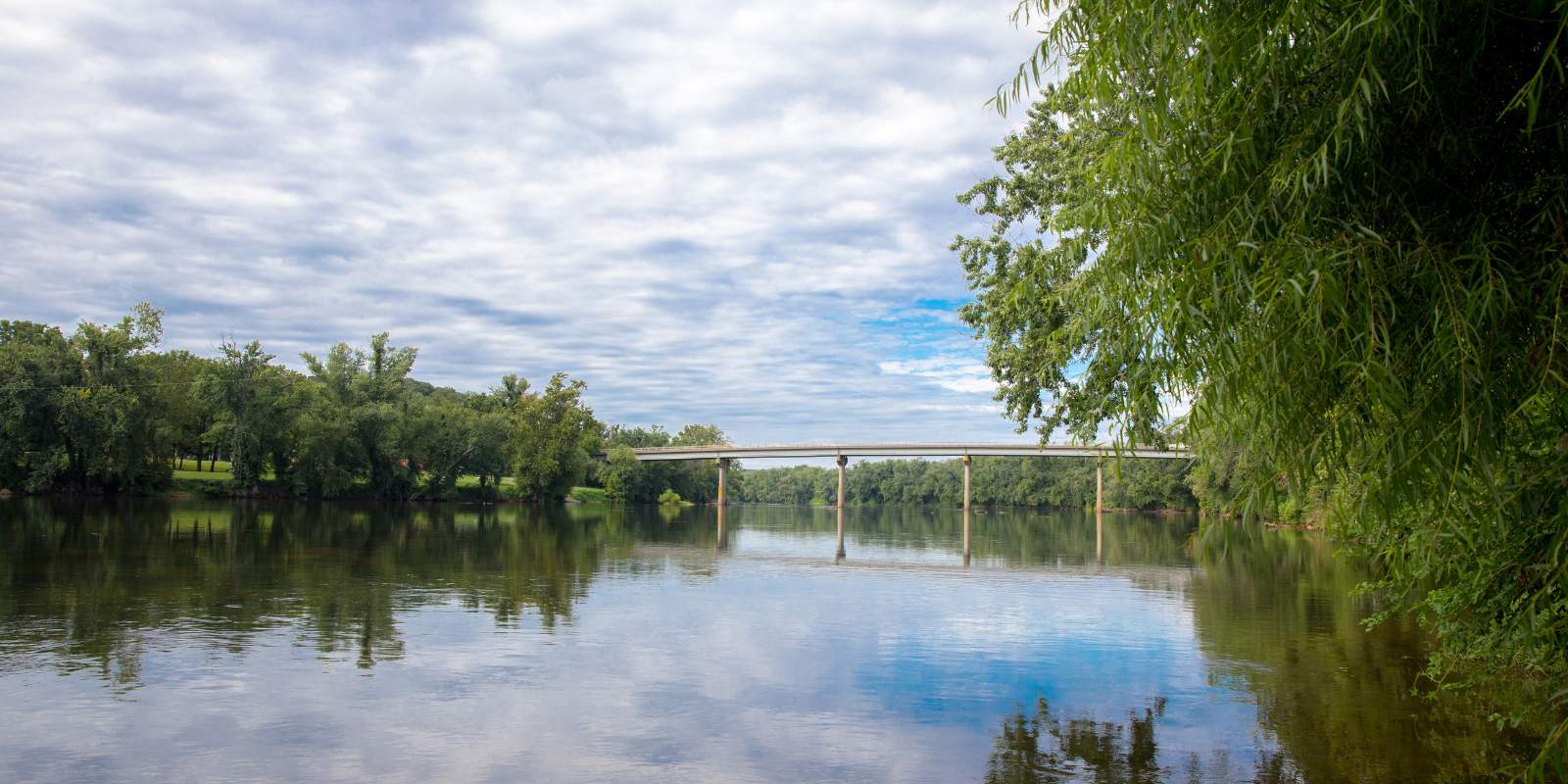By Molly Kirk/DWR
Photos by Meghan Marchetti/DWR
The year 2022 marked a historic reintroduction of an endangered freshwater mussel species into the James River as biologists from the Virginia Department of Wildlife Resources (DWR) and U.S. Fish and Wildlife Service (USFWS) released James spinymussel into five sites in August of last year. Protections from the Clean Water Act of 1972 and the Endangered Species Act (ESA) of 1973 were crucial in achieving this milestone.
The James spinymussel occurs primarily in the James River basin in Virginia, but the species has lost more than 90 percent of its historic range dueto habitat loss and pollution. The species could be found in tributaries and smaller streams, but before 2022, the last live James spinymussel found in the mainstem James River was found in the late 1960s.

James spinymussel individuals hadn’t been found in this stretch of the James River in Albemarle County for more than 50 years until DWR and USFWS released them in 2022.
In the summer of 2023, DWR biologists surveyed two of the five sites where they’d released the James spinymussel. “There were some shells that indicate some of them had died at the boat ramp site, but that wasn’t unexpected,” said Brian Watson, DWR aquatic resources biologist and state malacologist. “It’s hard to find them in a big river out there, but every one we found at the upstream site was alive, so that gave us a good indication that there was good survival at that site. And there are three more sites we’ll try to get to depending on river conditions next spring.”
Wild populations of the James spinymussel have been located in smaller tributaries of the James and in the Dan/Mayo river systems in Southern Virginia, but the mainstem James was the historic majority of its range. “It’s kind of the poster child for rare species in the James,” said Watson. “From a rare species standpoint, trying to recover it in the James River and maintain its population there is important for maintaining the survival of the species as a whole. While the species is in a number of tributaries of the James, some are doing better than others. But in order to try to recover the species, we have to get it back into the mainstem James River in order for the species to be healthy across the entire watershed.

DWR and USFWS biologists placed James spinymussel on the bed of the James River.
“Looking at the common mussels in the James River right now, we see fairly good numbers of those individuals in certain places, and we also see a lot of recruitment going on, which means that populations are healthy,” Watson said. “A lot of times we use those common species as our indicator of the quality of the river and the habitat for augmenting or reintroducing these rare mussels. What we’re seeing with some of the other assessment parameters that the James River Association has with their annual assessment of the James River and what we’ve been seeing with freshwater mussels in the James River—primarily from Lynchburg downstream to about Richmond—has given us an indication that conditions are good for the reintroduction of a rare species like the James spinymussel.”
Thanks to the ESA, DWR and USFWS biologists were ready to take advantage of those improving water quality conditions and stock juvenile James spinymussel back into the mainstem James in 2022. The species was listed as endangered to the federal Endangered and Threatened Species List in 1988, paving the way for research, habitat conservation work, and propagation efforts.
“Once a species is listed as endangered, that raises their profile,” said Watson. “The James spinymussel has been a priority species within DWR dating back to my predecessor working with it in the late ‘90s.” Decades of research and work on propagation efforts resulted in the juvenile James spinymussel that found their way back into the James in 2022.
“In addition, once a species is listed, there’s a lot more attention paid to projects that might impact that particular species and trying to get mitigation efforts to minimize impacts to the species that you might otherwise may not get if the species isn’t listed,” said Watson. “And, once the species is listed, it opens up some additional sources of funding for conservation work that we don’t have access to for other species. If they’re imperiled, it’s seen as a more urgent need to do conservation activities. ”
Watson, along with other DWR and USFWS biologists, will be out on the James River in the spring of 2024, looking for live James spinymussels. And they plan to continue working to conserve the species with conservation, propagation, and release efforts, in the goal that the species can move toward de-listing.
“I’m kind of proud to see it happen myself, and for a number of other folks that have worked on this in order to be able to get it to this point,” said Watson. “It’s taken a lot of individuals working over the years—whether it’s some of us that have worked directly with the propagation of the James spinymussel or other folks who have worked on policy issues with the species—to finally get to this point of getting them out in the river.”


